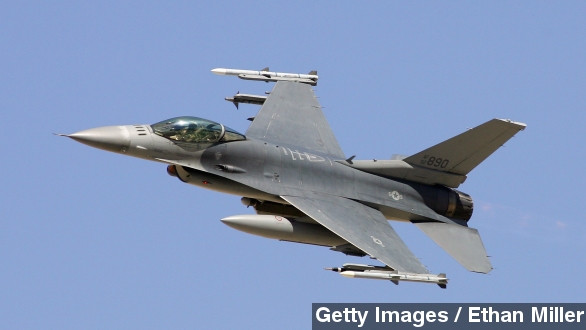The U.S. has already carried out some 150 airstrikes in Iraq, most prominently in the effort to take back the Mosul and Haditha dams from ISIS militants. (Video via U.S. Central Command)
White House Press Secretary Josh Earnest was grilled Monday on which other countries would also be carrying out airstrikes alongside the U.S. after anonymous White House officials told multiple outlets several Arab states were on board.
JOSH EARNEST VIA THE WHITE HOUSE: "If the shoe were on the other foot, and there probably is the press secretary for an Arab government being asked what the United States is actually going to do, and I would take umbrage if that individual would make commitments on behalf of the United States."
But regardless of what other countries may or may not do, it's worth examining what the U.S. military has done and how exactly those airstrikes work.
U.S. airstrikes against ISIS have so far been coordinated by U.S. Central Command — which is based at MacDill Air Force Base in Tampa, Florida. It's one of nine military command bodies, and its assigned region is the Middle East. (Video via U.S. Department of Defense)
Commanders ultimately authorize airstrikes based on intelligence provided from Joint Terminal Attack Controllers — JTACs — who are in turn advised by forward observers, who keep track of enemy troop movements and provide reconnaissance. (Video via AiirSource)
Given the lack of U.S. troops on the ground to provide that information, the military has relied on unmanned aerial recon through remotely piloted aircraft — or RPAs — which provide the JTAC remotely with video to coordinate.
Nevertheless, some analysts say the effectiveness of airstrikes against ISIS does have its limits.
CHRISTOPHER DICKEY VIA CNN: "What you cannot do with airpower is hold the ground that you have won. You can keep ISIS at bay in many areas, you can drive them back in some areas, you then have to move troops in to hold that ground."
Then there's the added complication of ISIS militants adapting their tactics in response to U.S. airstrikes, which military commanders have addressed. (Video via Euronews)
LT. GEN. WILLIAM MAYVILLE JR. VIA FOX NEWS: "One of the things that we have seen with the ISIL forces is that, where they have been in the open, they are now starting to dissipate, and to hide amongst the people. The targeting of this is going to become more difficult."
Congress is expected to vote on whether to fund the other part of the president's plan — training and equipping Iraqi, Kurdish and Syrian forces — this week.


